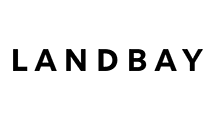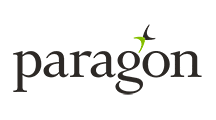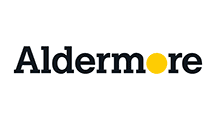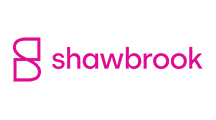Can I get a low deposit buy to let mortgage?
Yes, you can get a low deposit buy to let mortgage by putting down a minimum deposit of 15% of the property value. However, you may not need a cash deposit at all, if you own other property you can borrow against, see below for details.
Factors that may impact you getting a low deposit buy to let mortgage
- Some types of poor credit
- The value of the property being less than you expected
If you have questions, chat to our advisors on live chat, via the phone, or get a call-back we're here to help.
Today's low deposit buy to let mortgage rates
To compare today’s low deposit buy to let mortgage rates, click through to our buy to let mortgage calculator.
We work with over 80 UK mortgage lenders, including:
Compare today's buy let mortgage rates:
Eligibility for a low deposit buy to let mortgage
- First time buyers to experienced landlords
- You must be over 18 years old
- Minimum deposit 15% of the property value
- Upper age limits at application are flexible
- Low personal incomes are accepted
- Property, pension and employment income is OK
Ready to get started?
Your personal advisor will call. Direct lines start 01603. Get today's rates, help, or apply. Lender terms provided in as little as two hours!
Getting a low deposit buy to let mortgage
You can get a low deposit buy to let mortgage by putting down a minimum of 15% of the property value. However, you may not need a cash deposit at all, if you own other property you can borrow against.
There is a huge array of buy to let mortgage products in the market. Each product has its own terms and conditions that have to be met, to be accepted by the lender.
Currently, the minimum deposit required is 15% of the property value. For example, if you are buying a rental property that is worth £250,000, you would need to put down £37,500 as a buy to let deposit.
If you do not have this money in cash, there are other ways you could raise it. Say you own the property you live in, with or without a mortgage, you may be able to raise the funds for a deposit from available equity (the proportion you own) in the property.
Similarly, if you own another rental property, you could raise a buy to let deposit for another purchase from that too.
Increasing your investment to a 20% deposit, or more, typically means the mortgage rates on offer are lower. A larger number of mortgage products will be available to you, too.
We’ll help you assess the most cost effective option, taking into account lender costs. Some deals come with incentives, such as a free valuation or cash back at completion.
If you are ready to remortgage, or have an offer accepted on a property you want to buy, request a call back with a specialist buy to let mortgage advisor.
Why choose Commercial Trust?

Apply with ease by phone
It couldn't be easier to secure a low deposit buy to let mortgage with our expert advisors. Ask all your questions and arrange an application on the phone from your sofa.
World class customer service
We'll find you a great deal and take all the admin work off your shoulders, so you can relax while we get your mortgage completed. All the while giving you progress updates.
Lender decision in 2 hours
By contacting you by phone and email you can get help more quickly than in-person services. It's possible to get you a lender decision in principle in as little as two hours after our call.
We can help you with...
- Investing in a 15% deposit buy to let mortgage
- Using 2nd charge borrowing or equity in property to raise a deposit
- Getting a mortgage with a low personal income
- Mortgages with no upper age limits
- Mortgages with flexible affordability calculations
- 2 and 5 year deal periods
- Cashback, free valuation and other incentives
- Investing regardless of your portfolio size
- Investing in Houses of Multiple Occupation (HMO)
- Investing in Multi-unit blocks
- Investing in limited company buy to let or in personal name
- Investing as a first time landlord
- Investing as a first time buyer
- Repayment or interest-only mortgage payment options
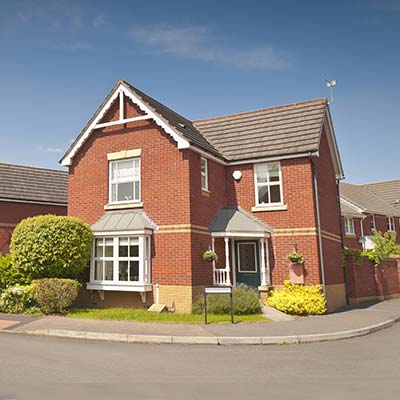
"Buy to let mortgage deposits are from just 15%-20%"
Clients with complex needs, rely on us to find them a deal that ticks all the boxes. This case came with a low deposit and other challenging factors, but ended in success.
Read moreCosts involved in a low deposit buy to let mortgage
Lenders may charge you for the valuation conducted on your property. They often also charge a product fee, sometimes this can be added to the mortgage.
You will need a conveyancing solicitor who will charge fees. Read our guide to choosing a conveyancing solicitor.
We charge a broker fee for our work. You pay in two parts. A booking fee, once we have found you a mortgage deal, at application. The majority of our fee is paid at completion of the mortgage.
Every mortgage comes with monthly mortgage costs based on the mortgage interest rate the lender charges. These are paid on either an interest-only or capital repayment basis.
How to apply for a low deposit buy to let mortgage
1
Tell our advisors about the property you are investing in, your needs and circumstances. If you have credit concerns, chat to us about them, so we can put you with the right lender.
2
Your advisor will find the best possible deal from a search of thousands of products. They will get you a lender decision in principle, this requires a soft credit search (occasionally it is a hard credit search).
3
Your advisor will call to discuss the product they have found for you. You will be presented with one mortgage, that is the best match for all your needs and offers you the most cost effective option.
4
On your instruction, your advisor will submit your mortgage application. Your account manager then does all liaison and administrative work to complete the deal, whilst keeping you updated at every step.
Commercial Trust is a member of the Legal & General Mortgage Club.
We chose to work with Legal & General as they are the largest, longest-running club in the UK.
This gives our clients the confidence that their borrowing is with a lender selected by an established and trusted club, who are involved in nearly one in three mortgages processed by intermediaries like us.
What our clients say about us
Frequently asked questions
You cannot get a buy to let mortgage with no deposit, however, you may be able to raise a deposit in ways you haven’t considered. You could borrow against equity in another property. This can be done by remortgaging your property, to release any available equity in it, to use as a buy to let deposit. This is called remortgaging to ‘release capital’. Second charge buy to let mortgages are another way of raising a buy to let deposit from a property you own. A second charge BTL mortgage sits alongside any existing borrowing (e.g. a mortgage) on a property.
You will need a deposit of at least 15% of the property value. For example, if the property you are interest in is worth £180,000, you would need at least £27,000 to achieve a 15% deposit. Bear in mind that there are other costs when investing in buy to let. These include legal fees and mortgage product fees. Where you are not borrowing at the maximum loan to value threshold, some fees can be added to the loan amount with some lenders.
There is no reason why you shouldn’t invest in buy to let with a low deposit, but there are pros and cons to consider. Getting into property investment for the first time may mean you have no choice but to use a low deposit buy to let mortgage. Similarly, even if you are investing in a second, third, fourth or fifth property, you may only be in a position to raise a small buy to let mortgage deposit. Typically, the more you put down as a deposit, the lower the mortgage interest rates are. This is because the more you put down, the more risk you are taking on in the agreement with the lender.
Ultimately, as long as the mortgage is affordable for you, there is nothing to stop you investing in buy to let with a low deposit, nor is there anything wrong with doing so. If property prices fall and you have only put down a small deposit, you are at greater risk of falling into negative equity - where the property value falls below the amount you paid for it. But, taking out a buy to let mortgage with a low deposit can be beneficial, as it might allow you to invest in two or more properties, rather than just one. By doing that, you have multiple rental income streams, which could mean the total income you receive exceeds the amount you would have achieved from just one property.
Yes, you can currently get a mortgage with a 15% deposit, but you will have more mortgage interest rates to choose from if you put down a larger deposit.
Yes, you can get a buy to let mortgage with a 20% deposit. It is worth comparing mortgage interest rates at different deposit amounts, because you might find that 5% extra on your deposit at each deposit threshold makes a big difference to the mortgage interest rates available to you.
No, you cannot get a buy to let mortgage with 10% deposit, unless you have other property you can borrow against, to get at least 15% of the property value together. Remember, there are other costs associated with a buy to let mortgage than just the deposit, and also wider costs associated with managing a rental property. If you are struggling to raise funds for a deposit, it might be better to wait until you can save up a larger amount, or look at investing in a lower value property so that your deposit amount constitutes a larger percentage of the property value.
You can invest in rental property with as little as 15% deposit, or even no cash from your pocket at all, if you can raise a deposit by borrowing against other property you own. Many websites talk about needing a 25% deposit for a buy to let mortgage, because it is at this threshold where a larger number of lenders offer buy to let mortgage deals.
The minimum amount of cash you have to put down on a buy to let mortgage is currently 15% of the value of the property you are buying. If you are struggling to raise a deposit, you might consider borrowing against equity in other property you own to raise the necessary funds.



